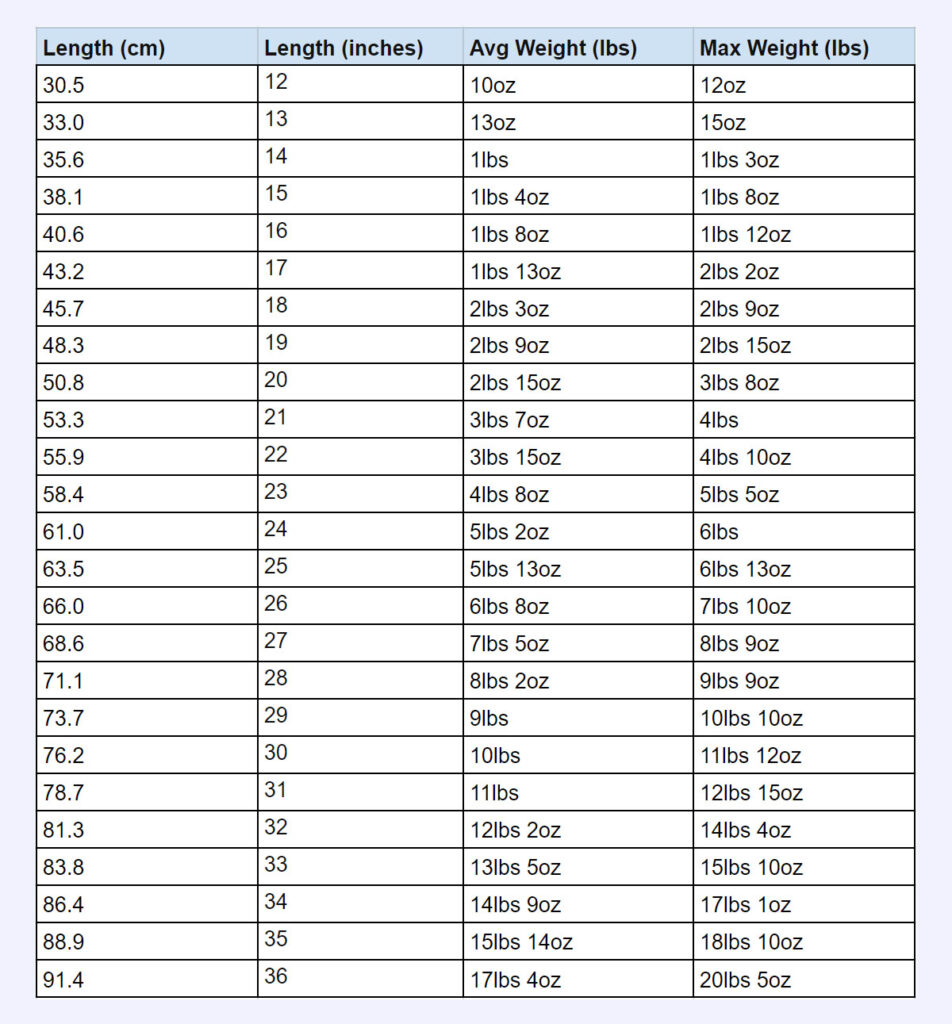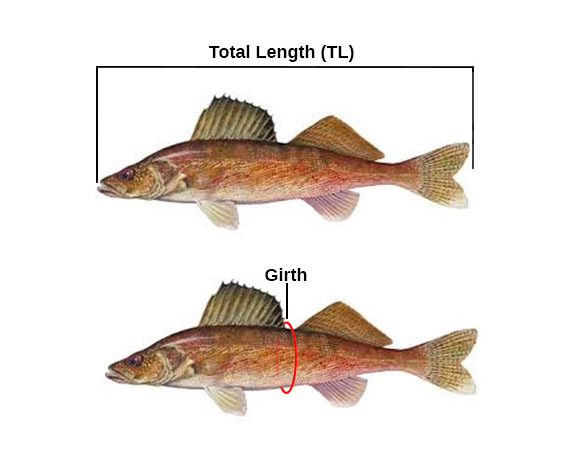No walleye weight formula is going to beat the accuracy of a scale, but there are several methods that can provide you a close estimate. Estimating the weight of your walleye catch without using a scale puts less stress on the fish and will typically get you to within a pound—plus or minus—of the actual weight.

The most accurate formula for estimating the weight of a walleye incorporates length and girth. When girth isn’t easily obtainable, there is an estimation method based on length alone that’s easy to compute and pretty accurate as well.
Walleye length to weight conversion formulas:
- (length x length x length)/2700 – use when girth isn’t avaiable
- (length x girth x girth)/800 – use for average size walleye
- (length x girth x girth)/750 – use for more plumb walleye
The first formula listed above—(length x length x length) / 2700—is based purely on the length of the fish. It isn’t going to be be the most accurate, but it’s the easiest obtain. Measure the total length (TL) of your walleye, times the length figure by 3, then divide by 2700—your divisor or “shape” factor.
You can adjust the divisor number up or down depending on the shape of the fish to get a more accurate estimate. 2700 is for an average-shaped walleye. If you walleye is on the thin side, increase your shape factor to 2800. If your walleye is on the plumb side, decrease the shape factor to 2600. Again, using only length isn’t ideal, but it will get you close.
Your most accurate weight estimate will come from using the formula that incorporates girth—(length x girth x girth)/800. Take your total length measure, multiple it by the girth squared, and then devide by 800. Using 800 as your shape factor will give a good weight estimate of an averaged-shaped walleye. If you fish is just really bulky from nose to tail, you can decrease you shape factor to 750 to produce a slightly more accurate estimate (but 800 is usually perfect.)
The walleye length to weight conversion chart below provides easy reference for average and maximum weight estimates based on the length of a walleye in inches. For an average size walleye using the “Avg Weight (lbs)” column. For heaftier specimens, using the “Max Weight (lbs)” column. Just keep this chart handy on your phone you won’t need to perform any computations, just measure your fish and look up the weight.
| Length (inches) | Avg Weight (lbs) | Max Weight (lbs) |
|---|---|---|
| 12 | 10oz | 12oz |
| 13 | 13oz | 15oz |
| 14 | 1lbs | 1lbs 3oz |
| 15 | 1lbs 4oz | 1lbs 8oz |
| 16 | 1lbs 8oz | 1lbs 12oz |
| 17 | 1lbs 13oz | 2lbs 2oz |
| 18 | 2lbs 3oz | 2lbs 9oz |
| 19 | 2lbs 9oz | 2lbs 15oz |
| 20 | 2lbs 15oz | 3lbs 8oz |
| 21 | 3lbs 7oz | 4lbs |
| 22 | 3lbs 15oz | 4lbs 10oz |
| 23 | 4lbs 8oz | 5lbs 5oz |
| 24 | 5lbs 2oz | 6lbs |
| 25 | 5lbs 13oz | 6lbs 13oz |
| 26 | 6lbs 8oz | 7lbs 10oz |
| 27 | 7lbs 5oz | 8lbs 9oz |
| 28 | 8lbs 2oz | 9lbs 9oz |
| 29 | 9lbs | 10lbs 10oz |
| 30 | 10lbs | 11lbs 12oz |
| 31 | 11lbs | 12lbs 15oz |
| 32 | 12lbs 2oz | 14lbs 4oz |
| 33 | 13lbs 5oz | 15lbs 10oz |
| 34 | 14lbs 9oz | 17lbs 1oz |
| 35 | 15lbs 14oz | 18lbs 10oz |
| 36 | 17lbs 4oz | 20lbs 5oz |
Measuring Length and Girth
Having accurate length and girth measurements is important for estimating weight of a walleye. For estimating weight, always use the total length (TL) measurement as shown in the diagram below. Total length is from the tip of the snout to the tip of the tail.

To determine girth, measure the circumference at the thickest point of your walleye’s midsection, which is often in front of, or in between, the dorsal fins.



